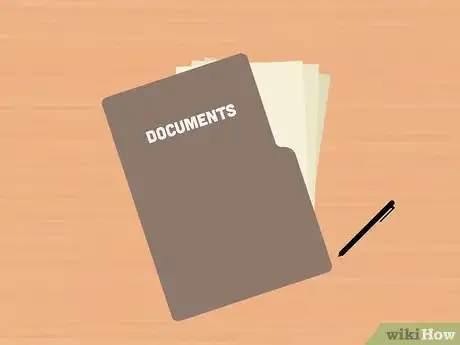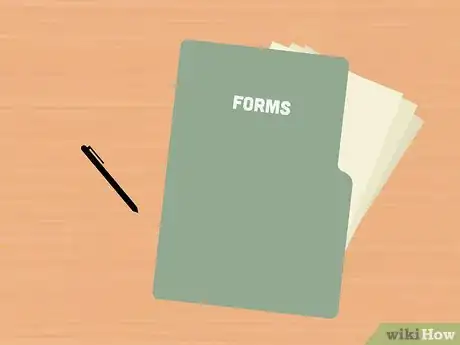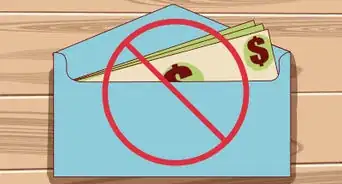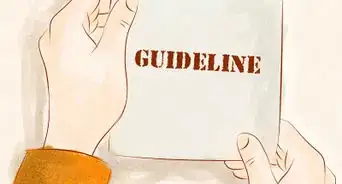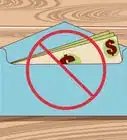This article was written by Jennifer Mueller, JD. Jennifer Mueller is an in-house legal expert at wikiHow. Jennifer reviews, fact-checks, and evaluates wikiHow's legal content to ensure thoroughness and accuracy. She received her JD from Indiana University Maurer School of Law in 2006.
This article has been viewed 38,849 times.
If you have a friend or family member in prison, you may want to send them money to pay for expenses such as telephone charges, or to buy items at the prison commissary such as paper and pencils, toiletries, or snacks. Any money you send will be deposited in the inmate's trust account. The methods for sending money vary depending on the facility in which your friend or loved one is housed, but generally you have the ability either to send funds electronically, or through the U.S. mail using a certified check or money order.
Steps
Sending Money Electronically
-
1Verify the inmate's location. Before you send money, make sure you have the correct facility for the inmate and he or she has not been transferred somewhere else.
- You can locate inmates in federal prison using the inmate locator at https://www.bop.gov/inmateloc/.
- In some states such as Ohio, you can only send money to an inmate if you are an approved visitor of that inmate. When you send money, your name must exactly match your name on the inmate's visitor's list and the name on your driver's license or government-issued identification card.[1]
-
2Find out what services the facility accepts. There are a number of electronic services such as MoneyGram, Western Union, and JPay that send money to prisons, but different prisons may use different services.
- Typically you can find out which services a particular facility uses either by calling the facility or by finding the website for the state or county department of corrections that operates the facility.
- You can send money electronically to federal inmates using either MoneyGram or Western Union.[2]
- Services such as JPay allow you to search for a particular inmate or facility directly from the service's website. You must open a free account to use the service, but once you do, you can send money to multiple inmates or set up recurring payments.[3]
- If you want to send cash using JPay, you can do so at a MoneyGram location. MoneyGram service centers can be found in retail stores such as CVS and Walmart.
Advertisement -
3Gather the information you'll need. You must have the inmate's identification number for the department of corrections, his or her legal name, and the correct facility name and number.
- For example, if you're sending funds to an inmate in federal prison, the company name and code city will always be the Federal Bureau of Prisons in Washington, DC, regardless of where the inmate is housed.[4]
- Typically you will need the state or federal DOC number of the inmate to whom you want to send money. That number serves as his or her account number.[5]
- Keep in mind that the inmate's name must match his or her name in the corrections database, even if it is spelled incorrectly or is not the name the inmate normally goes by.
- Some facilities may provide several types of sub-accounts for inmates. If you send funds electronically, you may not be able to control where the money goes. For example, funds sent through Western Union to an inmate in a Washington state prison can only be deposited in that inmate's "spendable" sub-account, not the sub-accounts for postage, medical, or educational expenses.
-
4Call or visit the service of your choice. Electronic services typically allow you to send money by calling a toll-free number, visiting a website, or visiting a kiosk or service location in person.
- Visiting a location in person typically gives you more options regarding your method of payment. For example, if you go to a MoneyGram or Western Union location, you have the ability to pay with cash. However, payment online or over the phone usually requires a debit or credit card.[6]
- The state of Ohio has kiosks available in the front entry building of each prison where you can deposit money into an inmate's account using cash, credit, or debit cards.[7]
-
5Fill out any necessary forms. Each service has a form you must fill out with information including your name and address and the inmate's name and identification number with the department of corrections.
- If you have any questions about how to fill out the forms, visit the department of corrections website or call prison staff. Employees at the payment service location may not be able to help you.[8]
-
6Send the funds. If you send money electronically, it typically is available in the inmate's account within 24 hours or the following business day.[9]
- All electronic money transfer options charge a processing fee. It may be a flat fee or based on the amount of money you send. For example, MoneyGram charges a flat fee of around $7 or $8 for any amount of money sent.[10]
- Some states limit the amount of money you can send at any one time. For example, in Ohio you can only send up to $200.[11] If you're sending funds to a federal prisoner, you can send up to $300 at one time.[12]
Sending Money in the Mail
-
1Verify the inmate's location. If you're using the mail, you probably don't want to send money to an inmate who is about to be transferred to another facility as it may not follow him or her.
- Apart from the postage, mailing a cashier's check or money order typically is a cost-free way to send money to an inmate.[13]
-
2Gather the information you'll need. Each prison requires the check or money order you send to be filled out in a certain way, and to include certain information to ensure the funds are deposited in the correct account.
- For example, if you're sending funds through the mail to an inmate in federal prison, the money order must include the inmate's full committed name and 8-digit corrections number.[14]
- Federal prisons place a 15-day hold on non-postal money orders or non-government checks.[15]
- If the prison where the inmate is housed has sub-accounts, you may be able to indicate on the face of the check or money order the account in which you want the funds deposited. For example, if you're sending funds to an inmate housed in a Washington state prison, you can indicate whether you want the funds to be deposited in that inmate's spendable, postage, medical, or education sub-account.
-
3Get a cashier's check or money order. You cannot send cash or personal checks to inmates. Prisons also don't accept third party checks such as payroll checks or government benefit checks.[16]
- Many prisons request that you send funds separately from any other items or letters. If you send a letter with your cashier's check or money order, typically prison staff will throw it away and the inmate will never receive it.[17]
-
4Include the correct information. Some prisons have a particular form that you must fill out with proof of your own identity, while others simply require information on the memo line of the cashier's check or money order.
- For example, a money order sent to an inmate in a North Carolina prison must be accompanied by a JPay deposit slip, which you can download and print at http://www.jpay.com/moneyOrderForms/NC_Money_Order_deposit_EN.pdf.[18] The state of Connecticut has an official remitter form that must accompany any funds available at http://www.ct.gov/doc/lib/doc/PDF/remitter.pdf.[19]
-
5Mail to the correct address. The address you use to send money may be different than the address you use to send letters to the inmate.
- For example, if you want to mail a check or money order to an inmate in North Carolina prisons, you must send your money order to the JPay processing center in Hialeah, Florida.[20]
- Typically, if you want to send the inmate funds through the mail, you must use the U.S. Postal Service, rather than using a private delivery service such as UPS or FedEx.[21]
- Typically the outside of your envelope must include a full and correct return address.
References
- ↑ http://www.drc.ohio.gov/inmate-funds
- ↑ https://www.bop.gov/inmates/communications.jsp
- ↑ https://www.jpay.com/pmoneytransfer.aspx
- ↑ https://www.bop.gov/inmates/communications.jsp
- ↑ https://www.bop.gov/inmates/communications.jsp
- ↑ https://www.bop.gov/inmates/communications.jsp
- ↑ http://www.drc.ohio.gov/inmate-funds
- ↑ https://www.bop.gov/inmates/communications.jsp
- ↑ https://www.ncdps.gov/Index2.cfm?a=000003,002240,002818
- ↑ https://www.ncdps.gov/Index2.cfm?a=000003,002240,002818
- ↑ http://www.drc.ohio.gov/inmate-funds
- ↑ https://www.bop.gov/inmates/communications.jsp
- ↑ https://www.ncdps.gov/Index2.cfm?a=000003,002240,002818
- ↑ https://www.bop.gov/inmates/communications.jsp
- ↑ https://www.bop.gov/inmates/communications.jsp
- ↑ https://www.bop.gov/inmates/communications.jsp
- ↑ https://www.bop.gov/inmates/communications.jsp
- ↑ https://www.ncdps.gov/Index2.cfm?a=000003,002240,002818
- ↑ http://www.ct.gov/doc/cwp/view.asp?q=265472
- ↑ https://www.ncdps.gov/Index2.cfm?a=000003,002240,002818
- ↑ https://www.bop.gov/inmates/communications.jsp
- ↑ https://www.bop.gov/inmates/communications.jsp


